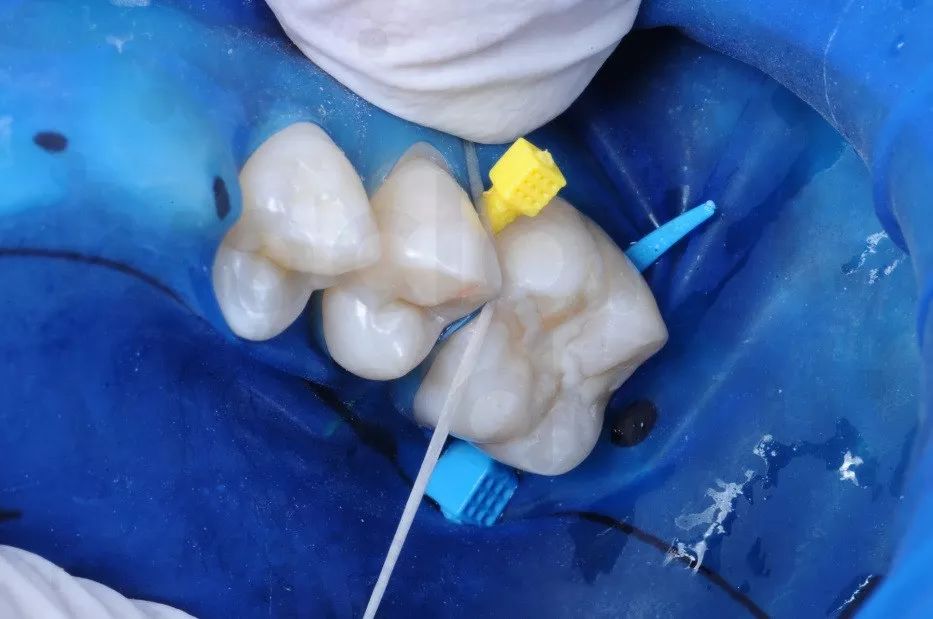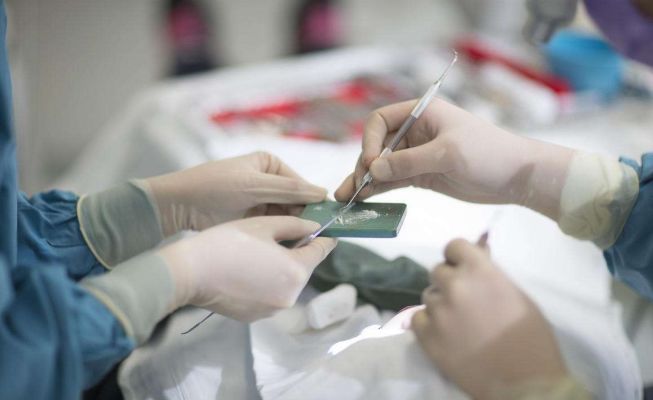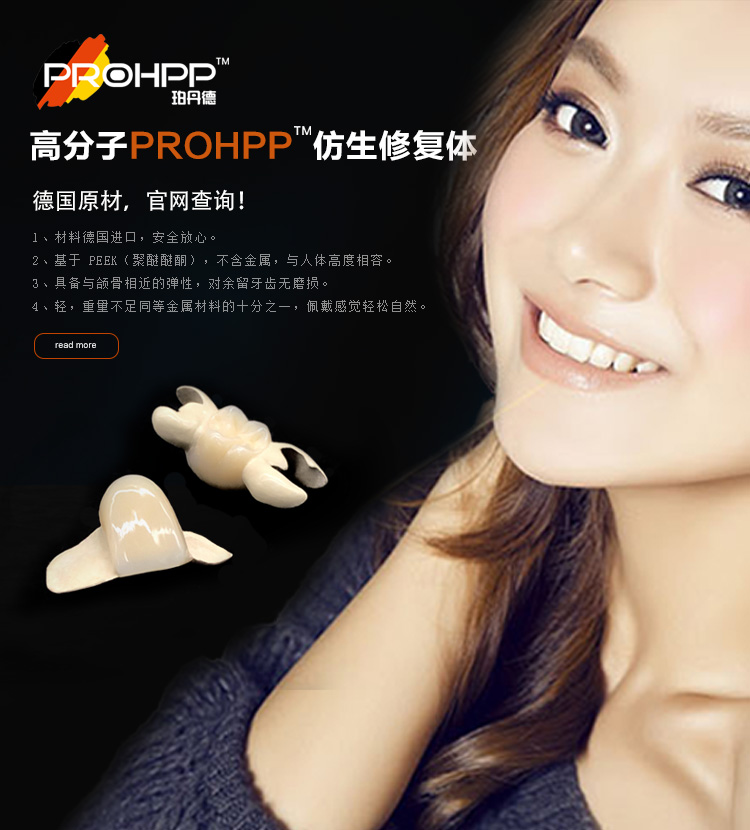Company News Home > Company News
The most complete knowledge of the resin is all here
Light curing composite resin adhesive repair is a commonly used technology and treatment method in oral clinical practice. It has the advantages of matching with tooth color, less removal of dental hard tissue, anti-abrasion, good anti-masticatory performance and so on. At present, the traditional silver amalgam filling has been basically replaced in the clinical dental repair treatment.
Composite resin and its curing principle
Composite resin is a polymer chemical bonding repair material composed of resin matrix, inorganic filler, coupling agent, initiator system, polymer inhibitor and coloring agent.
Curing mode of the composite resin
Early composite resin is through chemical curing (also known as curing) to complete the polymerization, in the clinical use of the components containing oxidant agent or initiator and components containing tertiary amine reducing agent completely mix, composition redox system, the system can quickly decompose free radicals, cause polymerization reaction at room temperature, by 3~5 min can complete curing. This curing method is very inconvenient in clinical application. In the 1970s, ultraviolet light curing lamp began to be used in clinical practice, but it has poor penetration ability, unreliable safety and other shortcomings, so it was soon eliminated. After the mid-1980s, visible light curing has gradually become a safe way of light curing.
Type and characteristics of light curing lamp
Light curing lamp is the main light source of composite resin bonding curing, and its performance characteristics have important influence on composite resin and its bonding properties. At present, there are mainly four types of light curing lamps in clinical application.
Common halogen lamp
Halogen lamp has a long history of application. The light source is quartz halogen tungsten bulb. There is a roll of tungsten wire, and quartz is wrapped in its outer layer. The light waves were filtered through a filter, producing blue light with a wavelength of 400 to 510 nm and an intensity of 400 to 650 mW / cm2. Ordinary halogen lamp because of different brands, the output wavelength and intensity is quite different. Although the halogen lamp has the curing ability of all kinds of resin.

But its curing speed is low, the irradiation time is long (20~40 s), the light radiation is relatively small, the noise is large, the bulb, reflective film and filter are easy to aging, the lamp tube is easy to break, and after aging can make the light intensity drop, curing efficiency is low and gradually replaced by other light sources.
Fast-acting halogen lamp
Fast acting halogen lamp is also known as high brightness halogen lamp. It is a halogen lamp with a high output light intensity through a higher output power bulb and a light guide rod that can concentrate the optical fiber. Light intensity> 850 mW / cm2, but it still needs over 10s to fully cure the resin.
Plasma-arc lamp
Plasma arc lamp uses the internal electrodes of the argon-filled bulb to produce arc light that is stronger than that of the halogen lamp. Through a long and bending optical fiber beam, like the halogen lamp need a filter, but the output light intensity is very large, the effective wavelength range is concentrated in the photosensitizer absorption range (430~490 nm), so the curing speed is fast, irradiation time is short, can cure composite resin in 3~5s. But the price of plasma arc lamp is higher, large volume, light heat production, operation is not convenient.
Argon laser lamp
Argon laser lamp activated by argon atoms from turquoise light, forming some discontinuous wavelength (470~ 495 nm), matching the absorption wavelength of most photosensitive initiator, argon laser lamp need high energy supply and full cooling, so the light source and control part installed on the larger base, pipeline through a longer flexible optical fiber beam transport. The Argon laser lamp output light is strong, almost no attenuation, and the effective wavelength is in good agreement with the photosensitizer (camphor quinone), so the curing speed is fast, the irradiation time is short, reducing the sensitivity of the distance between the material and the curing lamp head, low brightness argon laser lamp heat production is low, similar to the halogen lamp. The disadvantage is that the radiation wavelength range of argon laser lamp is narrow and discontinuous, large volume, poor portability, complex operation and high price.
Factors to be considered in the selection and use of light curing lamp
easy operation
From the clinician's point of view, convenient operation is a very important standard for choosing light-curing lamps. In clinical operation, from the surface, cheek and tongue surface repair teeth can easily approach the teeth, light cured light source should have a good Angle, in the treatment of adults and child patients can be as close as possible to the surface of the tooth restoration, so as to avoid the irradiation dead corner as far as possible.
Sufficient light-curing intensity
Light curing lamp with high light intensity is of great significance to improve the conversion rate of composite resin monomer. The higher the monomer conversion rate, the better the mechanical properties of composite resin. Therefore, the light intensity of the light curing lamp should be sufficient to ensure the complete curing of the top and bottom of the resin, but it will not produce excessive heat. It is suggested that the light intensity should be between 750 and 2 000 mw / cm2. Excessive power is easy to produce excessive heat and damage the adjacent pulp and gingival tissue, and does not speed up the curing speed. It cannot be used when the light intensity is <233 mW / cm2.
Suitable light-curing wavelength range
The choice of photocuring wavelength range mainly depends on the photoinitiator in the cured resin. At present, most clinical resin initiator systems are mothoquinone, with the absorption light wave range from 400 to 500 nm and the peak at 465 nm. Therefore, the commonly used light curing lamp wavelength range is mostly 400~500 nm visible blue light.

At present, the following two LED light curing lamps can usually be selected: ① blue light only LED light curing lamp; ② both blue light and ultraviolet light LED light curing lamp, namely multi-wavelength light curing lamp. Only blue light LED light curing lamp can activate the photosensitiser camphor quinone in the repair material, and multi-wavelength light curing lamp can activate camphor quinone, but also activate other photosensitizer to make resin polymerization. Multi-wavelength LED light curing lamp curing effect on the material surface is better than only blue light LED light curing lamp effect, but blue light can penetrate the depth of composite resin, is the main source of mechanical strength of materials. From this point of view, only the single wavelength light curing lamp is significantly higher than the multi-wavelength light curing lamp.
Sufficient curing time
For 2 mm thick composite resin, the recommended curing time of light curing lamp manufacturer is 20~40s, and dark color resin needs longer curing time than light color resin. Using the same light curing lamp, the longer the exposure time within a certain range, the greater the surface hardness of the composite resin. But extending the light time can only increase the curing depth. Some scholars have proposed that the total light energy = light intensity irradiation time, that is, the curing effect of 600 mW / cm2 irradiation for 40s is comparable to the curing effect of 1 200 mW / cm2 irradiation for 20s.

But if the light intensity is too low, simply extending the irradiation time can not guarantee the full curing of the resin.
other factor
The light intensity of light curing lamp will gradually decrease with the extension of use time, there are many factors can interfere with the effectiveness of the curing device. Such as the aging of the bulb, the wear or pollution of the light guide, the destruction of the light guide fiber beam, and repeated disinfection lead to the aging inside the device. Therefore, in the process of use, attention should be paid to the type and use time of the light curing lamp, often detect the light intensity of the light curing lamp, pay attention to the replacement and maintenance of components, to ensure the effectiveness and standardization of clinical use.
Hot newsMore
- [07-07]全口义齿的美学修复特点
- [07-07]Restoration of
- [07-07]Choose from fou
- [07-07]Nursing care of






